-
 Bitcoin
Bitcoin $82,889.2590
-0.46% -
 Ethereum
Ethereum $1,793.2293
-1.49% -
 Tether USDt
Tether USDt $0.9997
-0.02% -
 XRP
XRP $2.0568
0.29% -
 BNB
BNB $592.2304
-1.63% -
 USDC
USDC $1.0000
0.01% -
 Solana
Solana $115.7109
-3.42% -
 Dogecoin
Dogecoin $0.1619
-2.01% -
 Cardano
Cardano $0.6496
-0.45% -
 TRON
TRON $0.2390
0.90% -
 UNUS SED LEO
UNUS SED LEO $9.5630
1.80% -
 Toncoin
Toncoin $3.5272
-7.56% -
 Chainlink
Chainlink $12.7869
-3.09% -
 Stellar
Stellar $0.2602
-1.42% -
 Avalanche
Avalanche $18.0792
-2.71% -
 Shiba Inu
Shiba Inu $0.0...01214
-1.56% -
 Sui
Sui $2.2014
-8.72% -
 Hedera
Hedera $0.1623
-2.00% -
 Polkadot
Polkadot $4.0239
-1.09% -
 Litecoin
Litecoin $83.2407
0.28% -
 MANTRA
MANTRA $6.3682
0.89% -
 Bitcoin Cash
Bitcoin Cash $301.4692
-0.02% -
 Bitget Token
Bitget Token $4.4785
-1.45% -
 Dai
Dai $1.0000
0.01% -
 Ethena USDe
Ethena USDe $0.9994
-0.05% -
 Monero
Monero $214.4062
-0.61% -
 Hyperliquid
Hyperliquid $11.7638
-4.95% -
 Pi
Pi $0.5645
-15.24% -
 Uniswap
Uniswap $5.8559
-2.26% -
 Aptos
Aptos $5.0161
-4.08%
Why does blockchain need an incentive mechanism?
Incentives like cryptocurrency rewards are vital for blockchain security and decentralization, motivating participants to maintain network integrity and process transactions efficiently.
Apr 01, 2025 at 04:28 pm
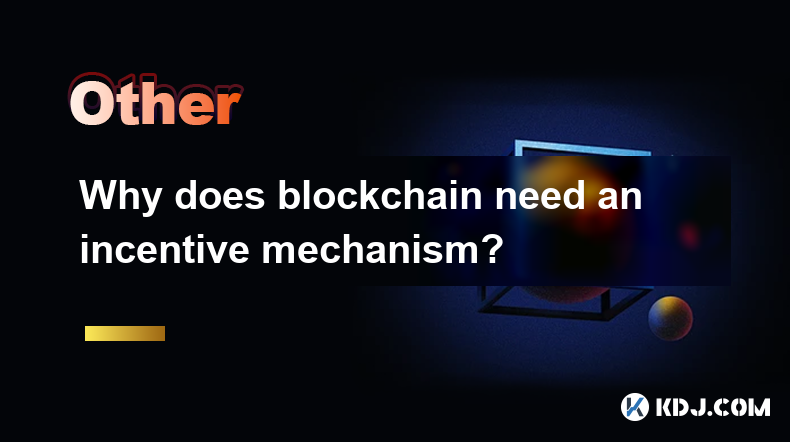
The Crucial Role of Incentives in Blockchain Networks
Blockchain technology, at its core, relies on a decentralized network of participants to validate and record transactions. Unlike traditional systems with centralized authorities, blockchains lack a single entity enforcing rules and ensuring security. This necessitates an incentive mechanism to motivate individuals to contribute their resources and maintain the network's integrity. Without proper incentives, the blockchain would be vulnerable to attacks and ultimately fail.
The primary function of a blockchain is to maintain a shared, immutable ledger. This requires significant computational power to solve complex cryptographic puzzles (in Proof-of-Work systems) or to validate transactions (in Proof-of-Stake systems). Participants who dedicate their resources to these processes need to be compensated for their efforts. This compensation acts as the incentive.
Understanding the Types of Incentives
Incentive mechanisms in blockchain networks primarily revolve around rewarding participants for their contributions. These rewards often come in the form of cryptocurrency tokens, which represent ownership and participation in the network. The types of incentives vary depending on the consensus mechanism employed by the blockchain.
Cryptocurrency Rewards: This is the most common incentive. Miners in Proof-of-Work systems earn newly minted coins or transaction fees for successfully adding blocks to the chain. Validators in Proof-of-Stake systems earn rewards for validating transactions and proposing new blocks.
Transaction Fees: Users pay fees to have their transactions included in a block. These fees are distributed to the miners or validators who process them, providing further incentive. The fee amount often depends on network congestion and the urgency of the transaction.
Staking Rewards: In Proof-of-Stake systems, users can "stake" their cryptocurrency to participate in the validation process. They earn rewards based on the amount staked and the time they contribute. This encourages long-term commitment to the network.
Governance Tokens: Some blockchains issue governance tokens that give holders voting rights on network upgrades and other decisions. This incentivizes participation in the governance process, ensuring the network's long-term health and development.
Reputation Systems: Some blockchains incorporate reputation systems that reward participants for honest behavior and penalize malicious actors. This fosters trust and cooperation within the network.
Why Cryptocurrency Rewards are Essential
The core of blockchain incentive mechanisms often lies in cryptocurrency rewards. These rewards are crucial for several reasons:
Security: Rewards incentivize participants to act honestly and protect the network from attacks. Malicious actors would need to overcome the combined computational power and economic incentive of honest participants.
Decentralization: By distributing rewards widely among participants, blockchain networks maintain decentralization and prevent a single entity from controlling the network.
Scalability: Incentive mechanisms can be designed to encourage network scalability by rewarding participants for efficient transaction processing.
Network Growth: Attractive rewards attract new participants, contributing to the network's growth and stability.
The Importance of Balancing Incentives
Designing effective incentive mechanisms requires careful consideration of several factors. The rewards must be sufficient to attract and retain participants, but not so high as to attract malicious actors or create unsustainable inflation. The system should also be fair and transparent, ensuring that all participants have an equal opportunity to earn rewards. A poorly designed incentive system can lead to network instability, centralization, or even collapse.
The distribution of rewards also plays a vital role. A fair and equitable distribution is crucial to maintain a healthy and decentralized ecosystem. This often involves mechanisms to prevent a small group of powerful participants from dominating the network.
Addressing Potential Issues in Incentive Mechanisms
One of the major challenges in blockchain incentive mechanisms is ensuring their long-term sustainability. As the network grows, the rewards per participant might decrease, potentially leading to a decline in participation. Furthermore, the value of cryptocurrency rewards fluctuates with market conditions, impacting the effectiveness of the incentive system. The design of the incentive system should account for these factors to ensure its long-term viability.
Another challenge is addressing the potential for manipulation and attacks. Malicious actors might attempt to exploit vulnerabilities in the incentive system to gain control of the network or manipulate transaction processing. Robust security measures and mechanisms to detect and prevent such attacks are crucial.
Frequently Asked Questions
Q: What happens if the incentive mechanism fails?
A: If the incentive mechanism fails, the blockchain network could become vulnerable to attacks, leading to a loss of security and potentially the collapse of the network. Participants might lose interest in contributing, leading to a decline in the network's functionality.
Q: Are there any downsides to using cryptocurrency rewards as incentives?
A: Yes, the fluctuating value of cryptocurrencies can affect the effectiveness of the incentive mechanism. High inflation can also dilute the value of rewards over time. Furthermore, the energy consumption associated with some Proof-of-Work systems raises environmental concerns.
Q: How are incentive mechanisms designed to prevent centralization?
A: Mechanisms like Proof-of-Stake and other consensus algorithms aim to distribute rewards more evenly among participants, preventing a small group from dominating the network. They also often incorporate mechanisms to penalize malicious or selfish behavior.
Q: Can incentive mechanisms be changed after a blockchain is launched?
A: In some blockchains, governance mechanisms allow for changes to the incentive structure over time. However, these changes usually require a consensus among network participants and careful consideration of potential consequences. Such changes should be carefully planned and executed to avoid disrupting the network.
Q: What are some examples of different incentive mechanisms used in different blockchains?
A: Bitcoin uses Proof-of-Work with cryptocurrency rewards for mining. Ethereum (currently transitioning to Proof-of-Stake) initially used Proof-of-Work, and now uses Proof-of-Stake with staking rewards for validators. Other blockchains utilize delegated Proof-of-Stake or other variations, each with its unique incentive structure.
Disclaimer:info@kdj.com
The information provided is not trading advice. kdj.com does not assume any responsibility for any investments made based on the information provided in this article. Cryptocurrencies are highly volatile and it is highly recommended that you invest with caution after thorough research!
If you believe that the content used on this website infringes your copyright, please contact us immediately (info@kdj.com) and we will delete it promptly.
- Several Altcoin Projects, Especially Memecoins, Witnessed Considerable Growth
- 2025-04-04 10:35:12
- When money moves this quickly, it’s usually following proof—not promises
- 2025-04-04 10:35:12
- Arctic Pablo Coin ($APC) Is a Meme Coin With a Unique Narrative Focused on Uncovering Earth's Hidden Mysteries
- 2025-04-04 10:30:12
- KISHU (OK X) is attracting attention as a high profit opportunity with a fund of 0.15%.
- 2025-04-04 10:30:12
- Donald Trump's New 185-Country Tariff Plan Sends Bitcoin and the Crypto Market into a Brief Disarray
- 2025-04-04 10:25:12
- Binance Put a Monitoring Tag on 10 Tokens
- 2025-04-04 10:25:12
Related knowledge
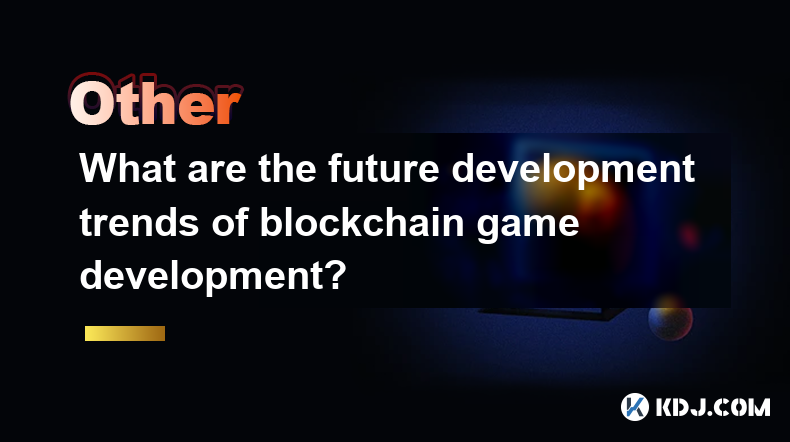
What are the future development trends of blockchain game development?
Apr 03,2025 at 05:00am
Blockchain technology has revolutionized various industries, and gaming is no exception. As we look to the future, several trends are set to shape the development of blockchain games. These trends not only promise to enhance the gaming experience but also to integrate blockchain technology more seamlessly into the gaming ecosystem. Let's explore these t...
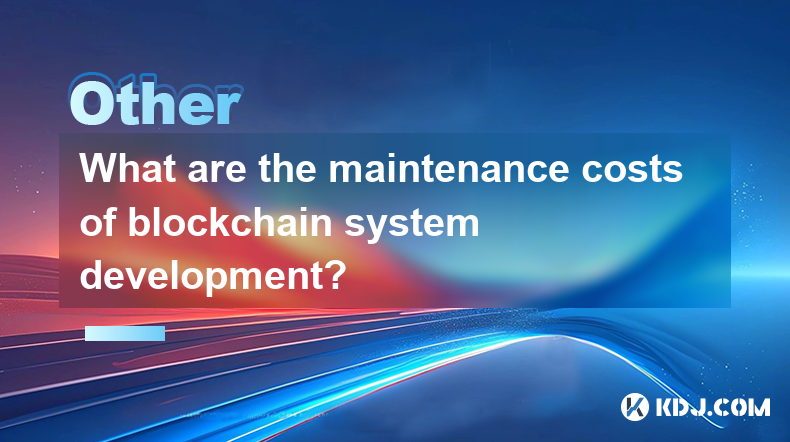
What are the maintenance costs of blockchain system development?
Apr 03,2025 at 06:07pm
The maintenance costs of blockchain system development are multifaceted and depend on various factors. These costs can include technical maintenance, security updates, infrastructure expenses, and personnel costs. Understanding these elements is crucial for anyone planning to develop or maintain a blockchain system. Technical MaintenanceTechnical mainte...
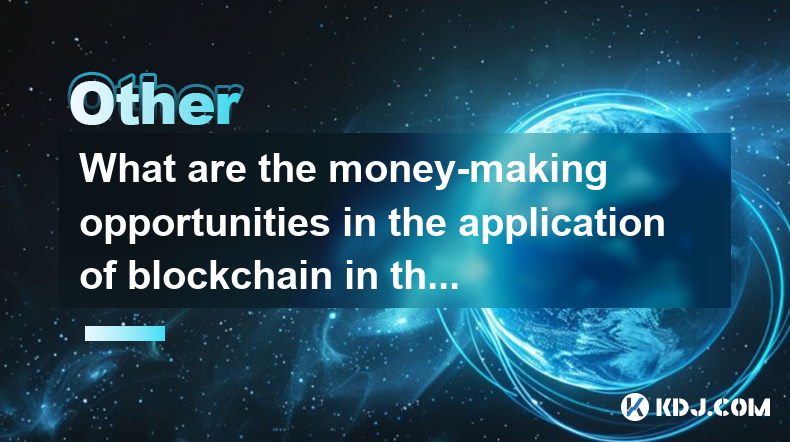
What are the money-making opportunities in the application of blockchain in the medical industry?
Apr 03,2025 at 03:35am
The integration of blockchain technology into the medical industry presents a myriad of money-making opportunities that can revolutionize healthcare systems. Blockchain's inherent characteristics, such as transparency, security, and immutability, make it an ideal solution for various medical applications. By leveraging blockchain, companies can develop ...
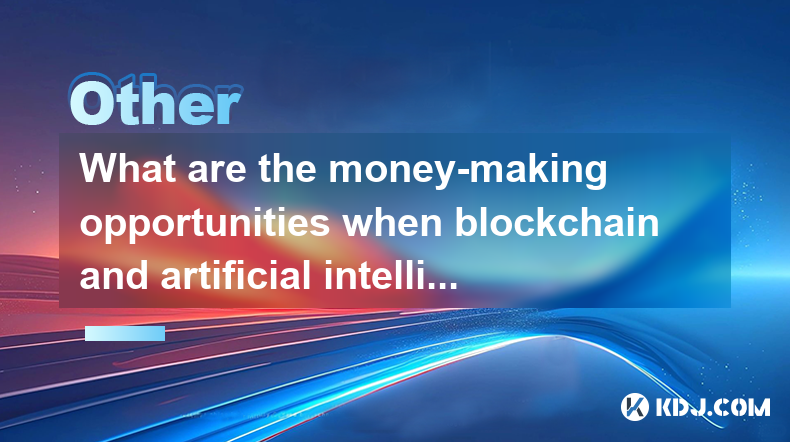
What are the money-making opportunities when blockchain and artificial intelligence are combined?
Apr 04,2025 at 01:28am
The convergence of blockchain and artificial intelligence (AI) presents a myriad of money-making opportunities within the cryptocurrency circle. This fusion leverages the decentralized and secure nature of blockchain with the analytical prowess of AI, creating innovative solutions and platforms that can generate significant revenue. From enhancing tradi...
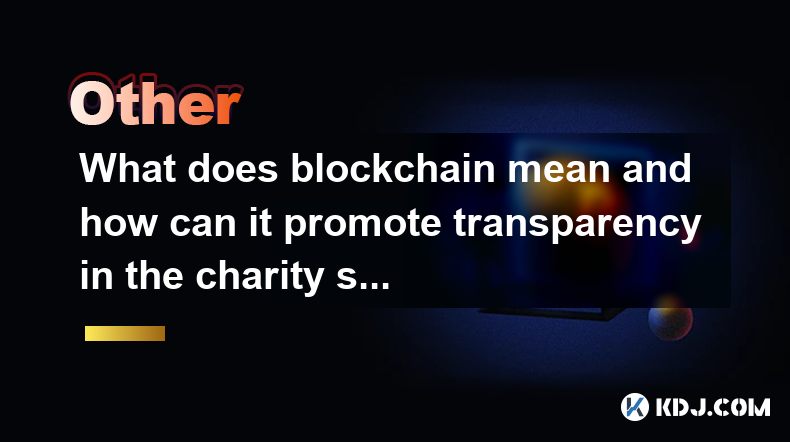
What does blockchain mean and how can it promote transparency in the charity sector?
Apr 03,2025 at 08:29pm
Blockchain technology is a decentralized, distributed ledger that records transactions across numerous computers. This ensures that the data is transparent and nearly impossible to alter retroactively. Essentially, blockchain serves as a digital ledger of all cryptocurrency transactions, enabling secure and direct exchanges without the need for intermed...
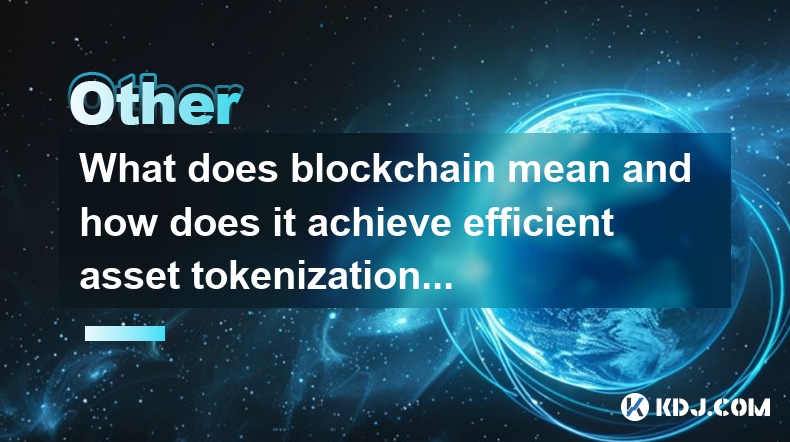
What does blockchain mean and how does it achieve efficient asset tokenization?
Apr 03,2025 at 07:57pm
Blockchain technology is a decentralized, distributed ledger that records transactions across numerous computers. It ensures that each transaction is secure, transparent, and immutable. The concept of blockchain was introduced with the launch of Bitcoin in 2009, but its applications have since expanded far beyond cryptocurrencies. At its core, blockchai...

What are the future development trends of blockchain game development?
Apr 03,2025 at 05:00am
Blockchain technology has revolutionized various industries, and gaming is no exception. As we look to the future, several trends are set to shape the development of blockchain games. These trends not only promise to enhance the gaming experience but also to integrate blockchain technology more seamlessly into the gaming ecosystem. Let's explore these t...

What are the maintenance costs of blockchain system development?
Apr 03,2025 at 06:07pm
The maintenance costs of blockchain system development are multifaceted and depend on various factors. These costs can include technical maintenance, security updates, infrastructure expenses, and personnel costs. Understanding these elements is crucial for anyone planning to develop or maintain a blockchain system. Technical MaintenanceTechnical mainte...

What are the money-making opportunities in the application of blockchain in the medical industry?
Apr 03,2025 at 03:35am
The integration of blockchain technology into the medical industry presents a myriad of money-making opportunities that can revolutionize healthcare systems. Blockchain's inherent characteristics, such as transparency, security, and immutability, make it an ideal solution for various medical applications. By leveraging blockchain, companies can develop ...

What are the money-making opportunities when blockchain and artificial intelligence are combined?
Apr 04,2025 at 01:28am
The convergence of blockchain and artificial intelligence (AI) presents a myriad of money-making opportunities within the cryptocurrency circle. This fusion leverages the decentralized and secure nature of blockchain with the analytical prowess of AI, creating innovative solutions and platforms that can generate significant revenue. From enhancing tradi...

What does blockchain mean and how can it promote transparency in the charity sector?
Apr 03,2025 at 08:29pm
Blockchain technology is a decentralized, distributed ledger that records transactions across numerous computers. This ensures that the data is transparent and nearly impossible to alter retroactively. Essentially, blockchain serves as a digital ledger of all cryptocurrency transactions, enabling secure and direct exchanges without the need for intermed...

What does blockchain mean and how does it achieve efficient asset tokenization?
Apr 03,2025 at 07:57pm
Blockchain technology is a decentralized, distributed ledger that records transactions across numerous computers. It ensures that each transaction is secure, transparent, and immutable. The concept of blockchain was introduced with the launch of Bitcoin in 2009, but its applications have since expanded far beyond cryptocurrencies. At its core, blockchai...
See all articles






















































































